Road accidents inflicts high economic costs. This ratio considers economic costs of road accidents with GDP (SEC-SEG-001).
Road accidents inflicts high economic costs. This indicator reports economic costs of road accident injuries in USD.
ADB is hosting a special knowledge-sharing webinar that will feature presentations on two road safety case studies that support achievement of the Global Road Safety Performance Targets, and will showcase examples of the key concepts and approaches that will be featured in the upcoming Road Safety Capacity Building Programme to be sponsored by ADB's Transport Sector Group.
Road Safety is a sustainable development challenge for the member countries of the Economic and Social Commission for Asia and the Pacific (ESCAP). In 2016, approximately 1.35 million people were killed in road crashes globally. The economic and social consequences of this are enormous. In recent years, road safety has been receiving greater attention from the international community, and in 2010, the General Assembly proclaimed the period from 2011 to 2020 as the Decade of Action for Road Safety. The global commitment to road safety was further strengthened by the General Assembly through the adoption of resolution 70/1 on 25 September 2015 of the 2030 Agenda for Sustainable Development, as reflected in targets 3.6 (by 2020 halve the number of global deaths by road accidents) and 11.2 (by 2030, provide access to safe, affordable, accessible and sustainable transport systems for all, improving road safety, notably by expanding public transport, with special attention to the needs of those in vulnerable situations, women, children, persons with disabilities and older persons) of the accompanying Sustainable Development Goals.
Road safety has been a major concern in Asia and the Pacific, as 60 per cent of global road deaths in 2016 occurred in the region. In line with the trend globally, road safety has received greater attention from high- level policymakers among ESCAP member countries. At the Ministerial Conference on Transport, at its third session, held in Moscow from 5 to 9 December 2016, the Asia-Pacific transport ministers renewed their commitments towards improving road safety by adopting the Ministerial Declaration on Sustainable Transport Connectivity in Asia and the Pacific, which was endorsed by the Commission in it its resolution 73/4 of 19 May 2017. Under this resolution, members and associate members of ESCAP have been encouraged in meeting their commitments under the Decade of Action for Road Safety (2011-2020) and 2030 Agenda for Sustainable Development.
Notably, road traffic deaths in the ESCAP region declined from 777,016 in 2010 to 733,541 in 2013, and then increased to 812,172 in 2016. The South and South-West Asia subregion accounted for 48.13 per cent of the road deaths.
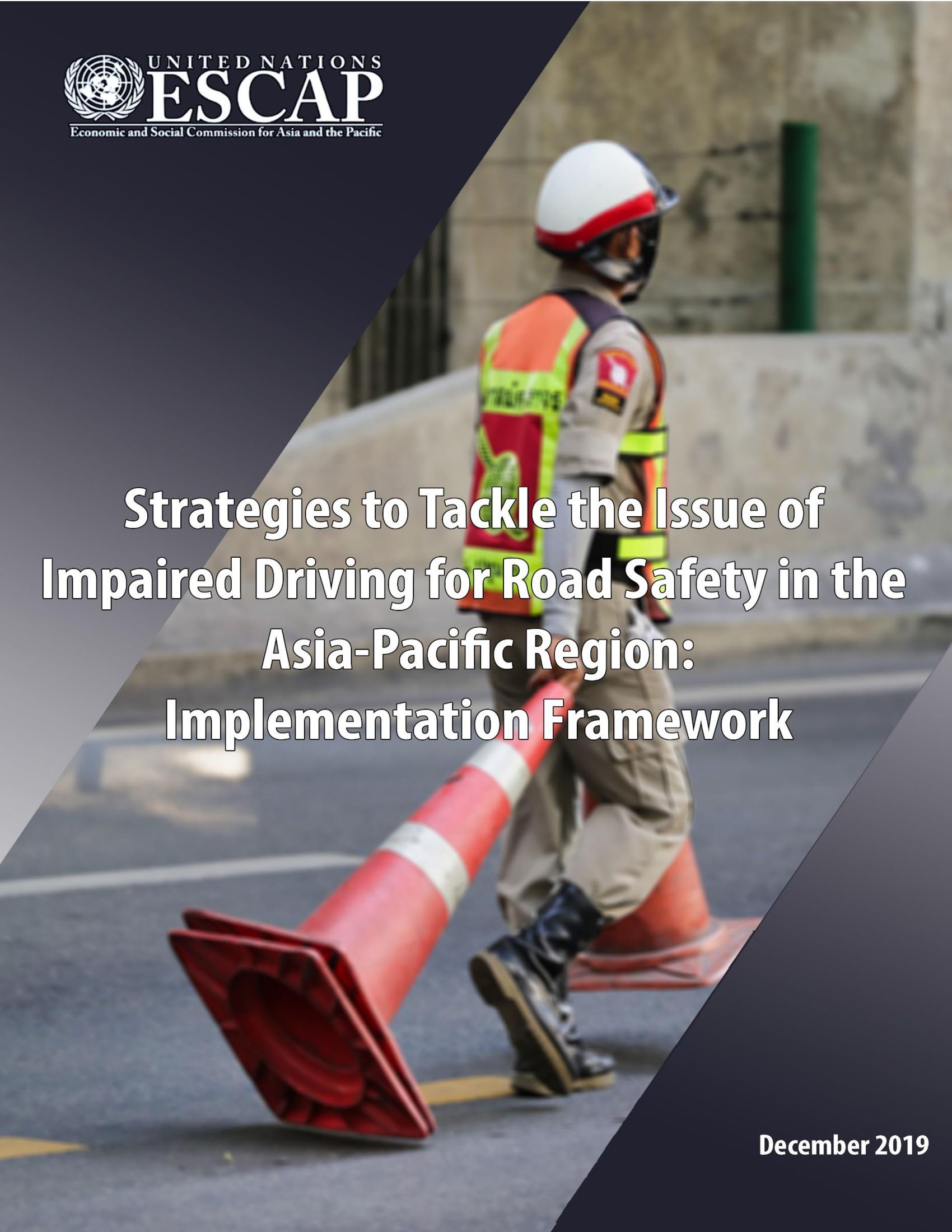
The Asian Highway Network is a coordinated plan for the development of highway routes of international importance with a view towards promoting and developing international road transport in the region. Since the Asian Highway network was adopted in 2003, it has already played a pivotal role in assisting member countries in improving intercountry and interregional transport links.
The Asian Highway classification and design standards provide the minimum standards and guidelines for the construction, improvement and maintenance of Asian Highway routes. According to the Intergovernmental Agreement on the Asian Highway network, Parties shall make every possible effort to implement the design standards. However, the quality of the Asian Highway network across member countries is uneven. The latest 2017 updates show that to date about 9,176 km, i.e.7.25 per cent, of the network do not yet meet the minimum desirable standards. An ESCAP estimation shows that upgrading different classes of the Asian Highway network to higher quality standards needs a considerable amount of investment estimated at US$ 51.4 billion in 2017.
A survey was conducted by the ESCAP secretariat to study status of implementation of the Asian Highway design standards in the member countries in June 2017. The survey results indicated that member countries encounter several challenges to implement the Asian Highway design standards. Lack of funding is the most critical challenge. Lack of awareness as well as lack of planning and coordination also hinder the development of the routes as well as implementation of the Asian Highway design standards.
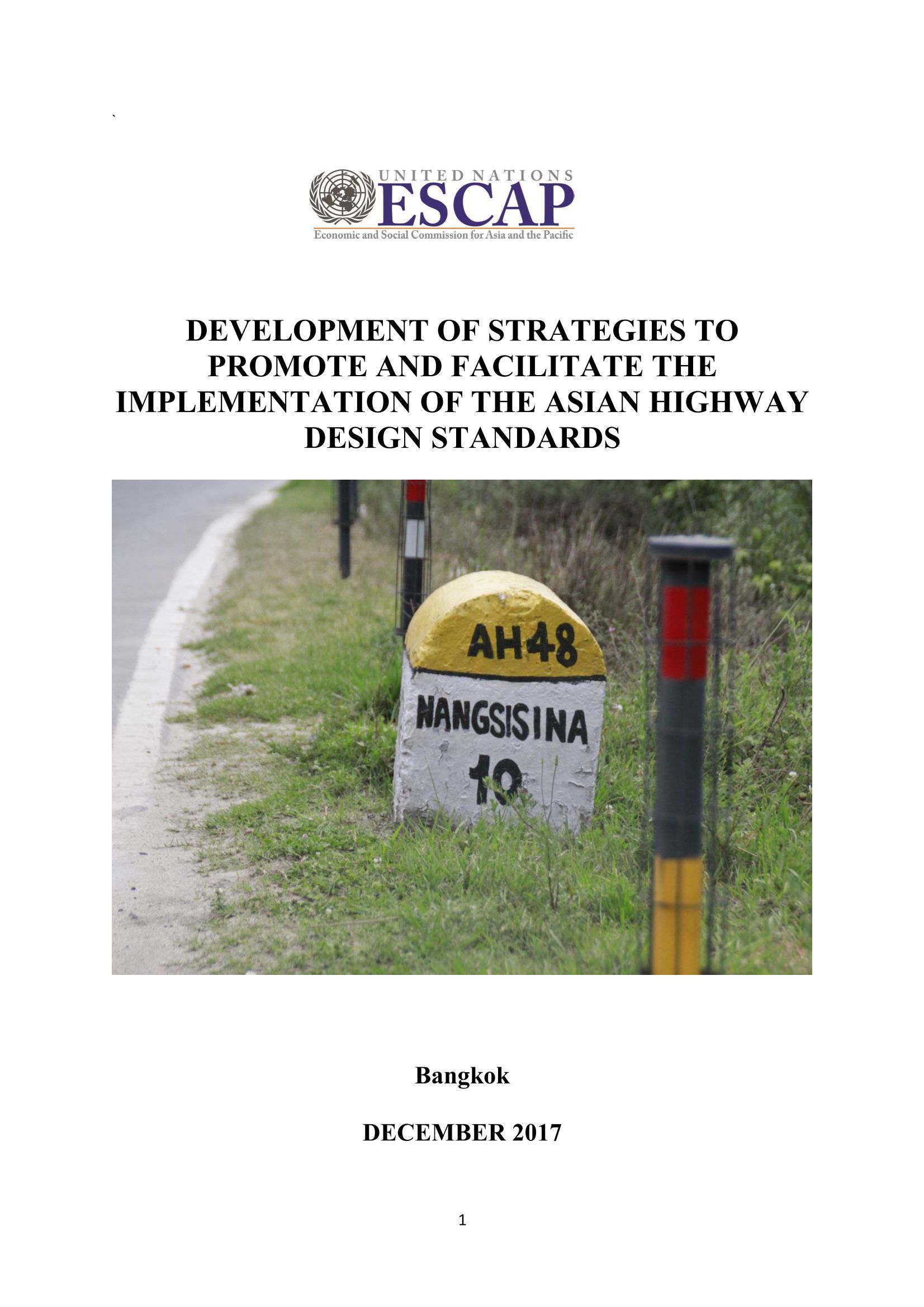
This document consists of recommended guidelines related to the “Asian Highway Design Standard for Road Safety” to the Intergovernmental Agreement on the Asian Highway Network.
While the guidelines are not mandatory in nature, the member countries of the Asian Highway network are encouraged to refer to the principles and recommendations given in the document for new road projects and improvements of existing sections of Asian Highway routes under their jurisdiction.
Due to the diverse circumstances of the Asian Highway Network, the adoption of particular recommendations would need to take into account prevailing social, economic and technical considerations.
In all cases, sound engineering skills are required to formulate specific solutions to address project issues which could be complex in reality. Flexibility and innovations are desirable as far as safety performance is not undermined and consistency is reasonably maintained.
This document does not necessarily reflect the view of the United Nations Economic and Social Commission for Asia and the Pacific (UNESCAP).
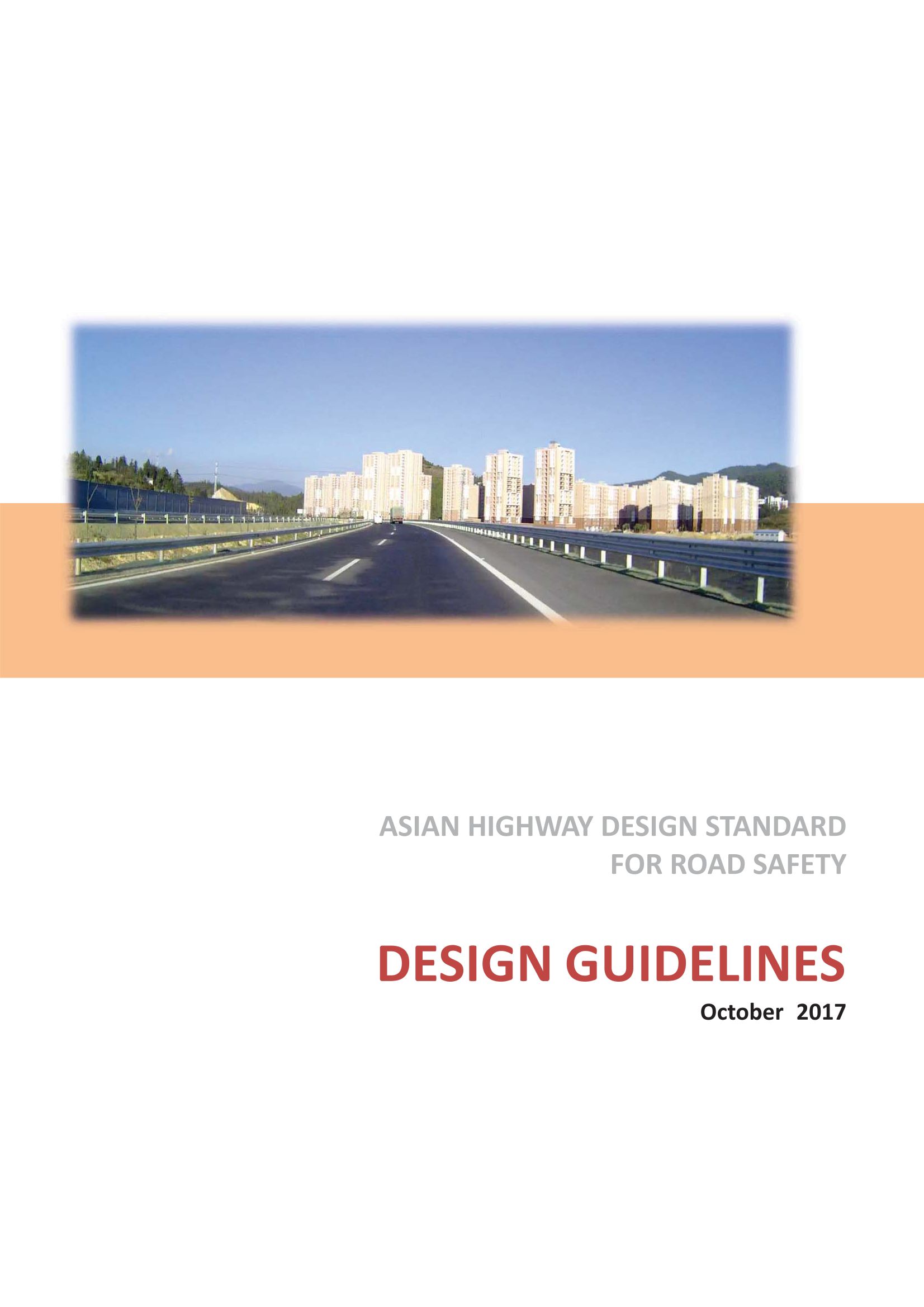
CAREC Road Safety Engineering Manual 2: Safer Road Works
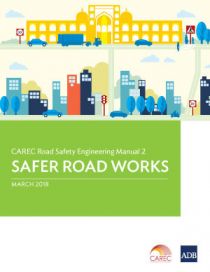
This manual explains good practices for roadwork sites, offering clear and simple guidance for CAREC road authorities to use to improve road safety at these sites for road users and workers alike. It offers information about the six-zone process, how to plan and implement a traffic management plan, and how to manage a safe worksite. This manual is essential reading for project managers, designers, supervision consultants, contractors, works supervisors and others who have a responsibility for safe worksites.
About the CAREC Road Safety Engineering Manuals
The series of road safety engineering manuals of the CAREC Program came from the endorsement of the CAREC Road Safety Strategy 2017-2030 by member countries. The strategy supports and encourages CAREC authorities to plan, design, construct, and maintain safe roads.
CAREC Road Safety Engineering Manual 1: Road Safety Audit
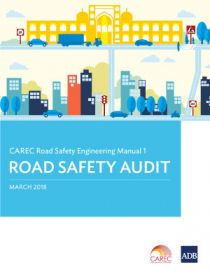
Research indicates that up to 28% of crashes are due to the road environment. The first and most important objective of road safety audit is to minimize the risk of crashes, and to minimize the severity of any crashes that may occur on a new road project. Road safety audit is suggested to be undertaken for all CAREC road projects. This manual provides full information for those who undertake the audits (practitioners) as well as for those who manage the audit process (policy makers).
About the CAREC Road Safety Engineering Manuals
The series of road safety engineering manuals of the CAREC Program came from the endorsement of the CAREC Road Safety Strategy 2017-2030 by member countries. The strategy supports and encourages CAREC authorities to plan, design, construct, and maintain safe roads.
Pagination
- Page 1
- Next page
